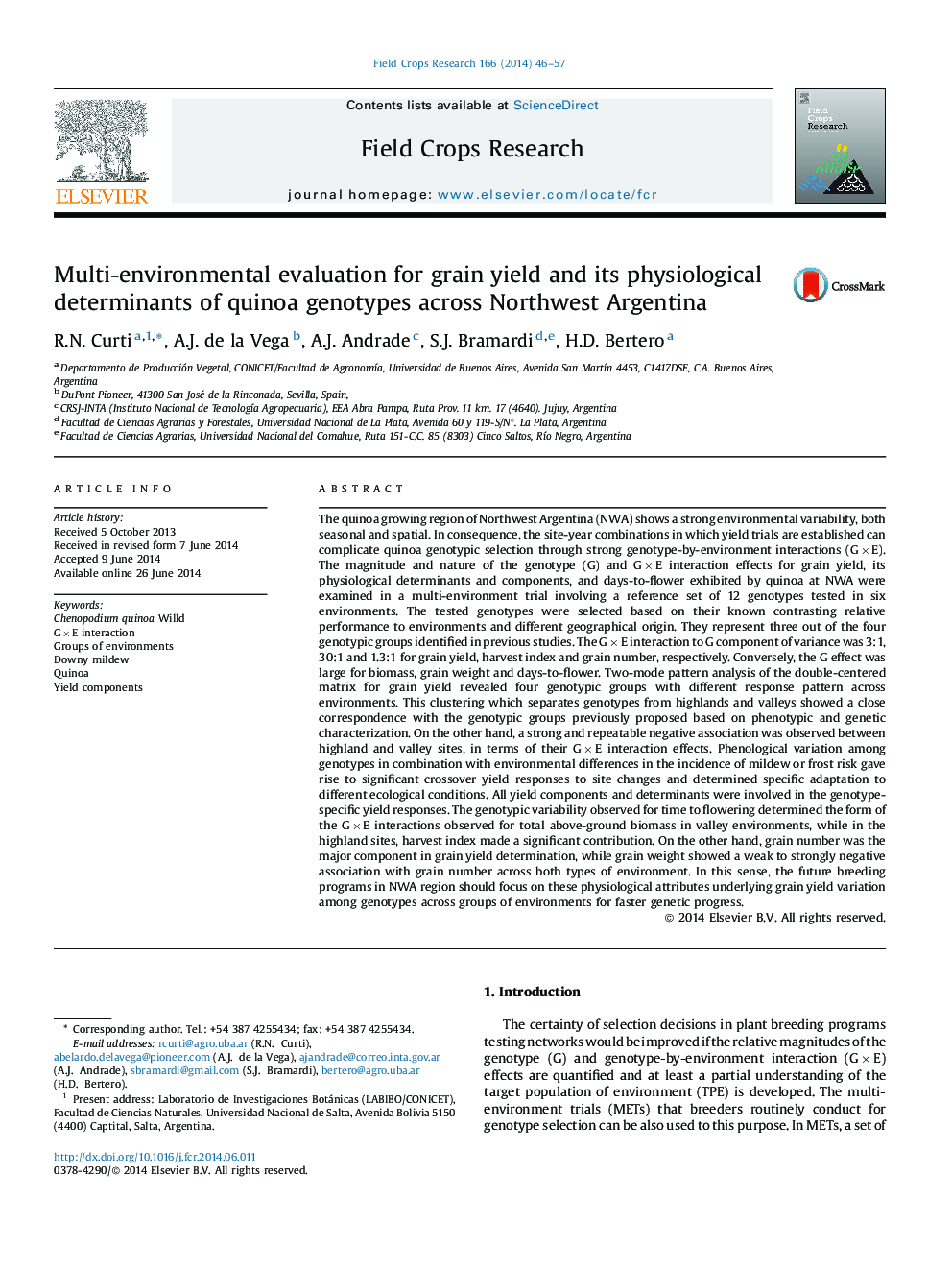| کد مقاله | کد نشریه | سال انتشار | مقاله انگلیسی | نسخه تمام متن |
|---|---|---|---|---|
| 4509990 | 1624697 | 2014 | 12 صفحه PDF | دانلود رایگان |
• A reference set of 12 quinoa genotypes was evaluated for grain yield and its physiological determinants across Northwest Argentina.
• Significant crossover genotype by environment interaction for yield were observed.
• Time to flowering played a major role in determining genotypic specific response to environments.
• Highland and valley sites showed contrasting effects on the physiological attributes underlying grain yield among genotypes.
• Grain number was the main determinant of grain yield across sites.
The quinoa growing region of Northwest Argentina (NWA) shows a strong environmental variability, both seasonal and spatial. In consequence, the site-year combinations in which yield trials are established can complicate quinoa genotypic selection through strong genotype-by-environment interactions (G × E). The magnitude and nature of the genotype (G) and G × E interaction effects for grain yield, its physiological determinants and components, and days-to-flower exhibited by quinoa at NWA were examined in a multi-environment trial involving a reference set of 12 genotypes tested in six environments. The tested genotypes were selected based on their known contrasting relative performance to environments and different geographical origin. They represent three out of the four genotypic groups identified in previous studies. The G × E interaction to G component of variance was 3:1, 30:1 and 1.3:1 for grain yield, harvest index and grain number, respectively. Conversely, the G effect was large for biomass, grain weight and days-to-flower. Two-mode pattern analysis of the double-centered matrix for grain yield revealed four genotypic groups with different response pattern across environments. This clustering which separates genotypes from highlands and valleys showed a close correspondence with the genotypic groups previously proposed based on phenotypic and genetic characterization. On the other hand, a strong and repeatable negative association was observed between highland and valley sites, in terms of their G × E interaction effects. Phenological variation among genotypes in combination with environmental differences in the incidence of mildew or frost risk gave rise to significant crossover yield responses to site changes and determined specific adaptation to different ecological conditions. All yield components and determinants were involved in the genotype-specific yield responses. The genotypic variability observed for time to flowering determined the form of the G × E interactions observed for total above-ground biomass in valley environments, while in the highland sites, harvest index made a significant contribution. On the other hand, grain number was the major component in grain yield determination, while grain weight showed a weak to strongly negative association with grain number across both types of environment. In this sense, the future breeding programs in NWA region should focus on these physiological attributes underlying grain yield variation among genotypes across groups of environments for faster genetic progress.
Journal: Field Crops Research - Volume 166, September 2014, Pages 46–57
